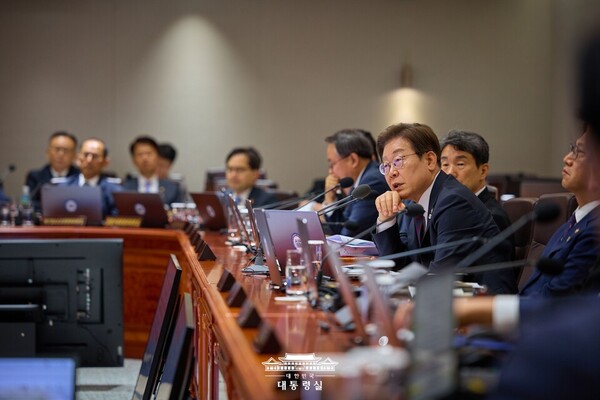The Lee Jae Myung administration has established an interagency strategy to shed the stigma of having the highest suicide rate among OECD member countries within a decade.
The government aims to reduce the suicide rate, which reached 28.3 per 100,000 people in 2024, to 19.4 by 2029 and below 17 by 2034.
The government announced the plan at the ninth meeting of the Suicide Prevention Policy Committee, held at the Seoul Government Complex last Friday, and chaired by Prime Minister Kim Min-seok. It deliberated and approved the “2025 National Suicide Prevention Strategy,” which contains these steps.

The National Suicide Prevention Strategy, with the vision of “A society where everyone protects everyone, a Korea where protecting life is part of everyday life,” presents the mid- to long-term direction for suicide prevention policies and specifies urgent tasks across various sectors to be pursued at the government-wide level.
This strategy, participated in by 14 ministries, agencies, and commissions, including the Ministry of Health and Welfare, the Office for Government Policy Coordination, the Financial Services Commission, the Ministry of Education, the Ministry of Gender Equality and Family, the Ministry of Employment and Labor, the Ministry of Justice, the Ministry of the Interior and Safety, the Ministry of National Defense, the National Police Agency, and the National Fire Agency, consists of 18 implementation tasks across five major areas.
“While the government has made efforts to prevent suicide, it is true that satisfactory results have not been achieved thus far,” Prime Minister Kim said. “The new administration will treat suicide as a national priority, systematically operate the Suicide Prevention Policy Committee, and strive to identify and assist those at risk of suicide.”
The Lee administration has consistently stressed the urgency of addressing Korea's severe suicide problem since taking office. This emphasis is reflected in the 2026 suicide prevention budget, which has been set at 70.8 billion won ($51 million), a 20.6 percent increase from this year.
The increased budget for next year will be used to expand the workforce at suicide prevention centers (from 2.6 people in 2025 to five people in 2026), expand nationwide one-stop support for bereaved families, and establish five additional Life-Loving Crisis Response Centers.
“To ensure the policies announced today are implemented without delay, we will establish a cross-ministerial task force dedicated to suicide prevention, alongside the committee, and drive these efforts with focused intensity,” Prime Minister Kim said.
Related articles
- Visiting high-risk depression patients cuts suicide reattempts: study
- Short, fast economic growth leads to higher suicide rate in rich countries: study
- 'Childhood depression more common than ADHD as a cause of sudden academic decline'
- Migrant workers in Korea face isolation and rising suicide rates
- Suicide counseling surges in Korea but treatment referrals plummet
- Lee government's public healthcare policy is no different from its predecessor’s: civic groups
- Suicide victims sent clear 'last signals,’ 10-year study finds

